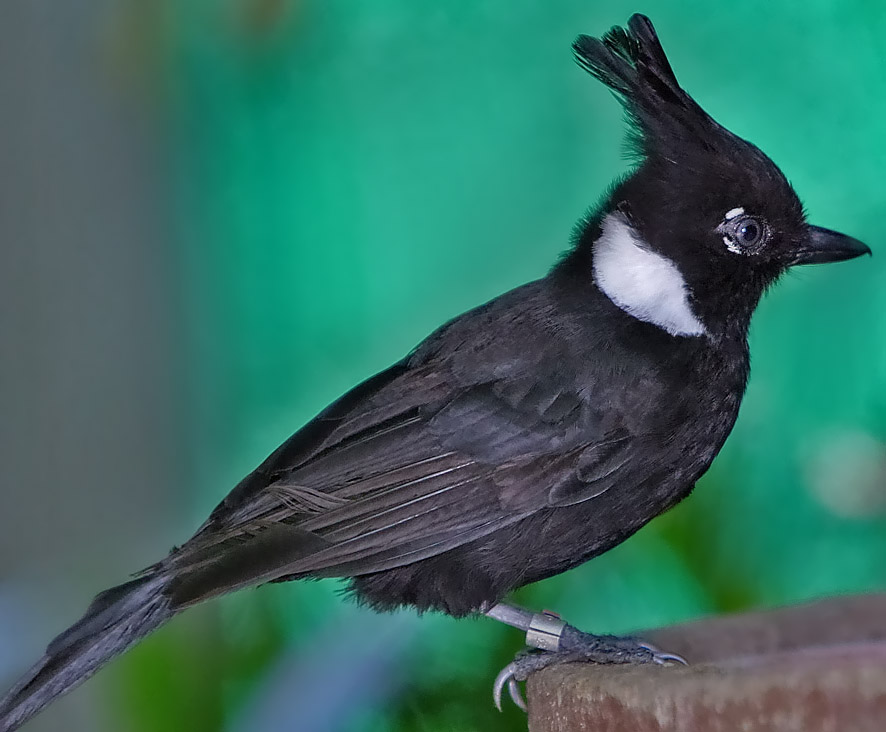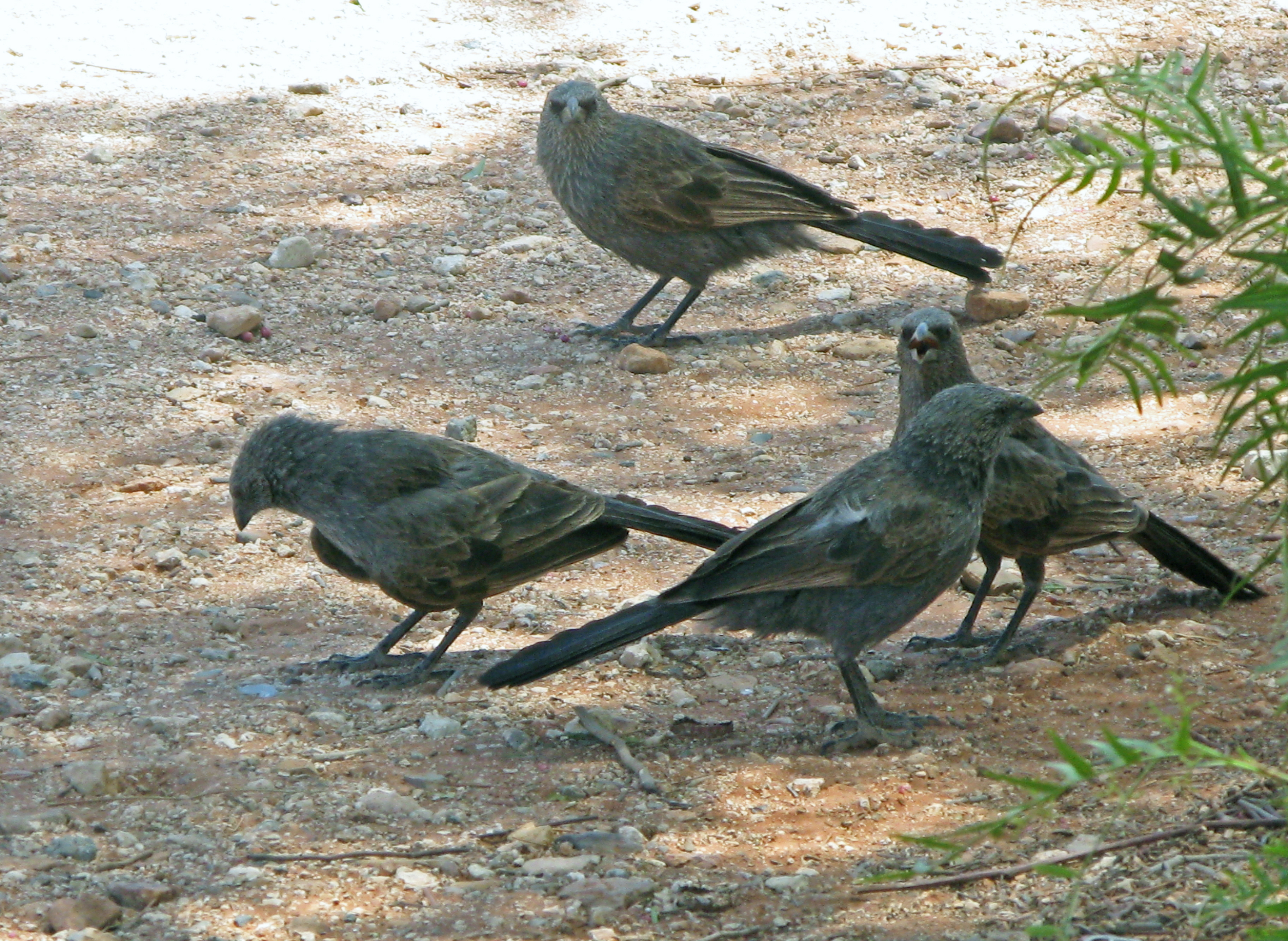|
Corvoidea
Corvoidea is a superfamily of birds in the order of Passeriformes. Systematics Corvoidea contains the following families: * Vireonidae – vireos * Rhipiduridae – fantails * Dicruridae – drongos * Monarchidae – monarch flycatchers * Ifritidae – blue-capped ifrit * Paradisaeidae – birds-of-paradise * Corcoracidae – white-winged chough and apostlebird * Melampittidae – melampittas * Laniidae – shrikes * Platylophidae - jayshrike * Corvidae Corvidae is a cosmopolitan family of oscine passerine birds that contains the crows, ravens, rooks, jackdaws, jays, magpies, treepies, choughs, and nutcrackers. In colloquial English, they are known as the crow family or corvids. Cu ... – crows, ravens, and jays References Passeri Bird superfamilies Extant Eocene first appearances {{Corvoidea-stub ... [...More Info...] [...Related Items...] OR: [Wikipedia] [Google] [Baidu] |
Passeriformes
A passerine () is any bird of the order Passeriformes (; from Latin 'sparrow' and '-shaped'), which includes more than half of all bird species. Sometimes known as perching birds, passerines are distinguished from other orders of birds by the arrangement of their toes (three pointing forward and one back), which facilitates perching. With more than 140 families and some 6,500 identified species, Passeriformes is the largest clade of birds and among the most diverse clades of terrestrial vertebrates, representing 60% of birds.Ericson, P.G.P. et al. (2003Evolution, biogeography, and patterns of diversification in passerine birds ''J. Avian Biol'', 34:3–15.Selvatti, A.P. et al. (2015"A Paleogene origin for crown passerines and the diversification of the Oscines in the New World" ''Molecular Phylogenetics and Evolution'', 88:1–15. Passerines are divided into three clades: Acanthisitti (New Zealand wrens), Tyranni (suboscines), and Passeri (oscines or songbirds). The passerin ... [...More Info...] [...Related Items...] OR: [Wikipedia] [Google] [Baidu] |
Corvidae
Corvidae is a cosmopolitan family of oscine passerine birds that contains the crows, ravens, rooks, jackdaws, jays, magpies, treepies, choughs, and nutcrackers. In colloquial English, they are known as the crow family or corvids. Currently, 133 species are included in this family. The genus ''Corvus'', including the crows, rooks, and ravens, makes up over a third of the entire family. Corvids (ravens) are the largest passerines. Corvids display remarkable intelligence for animals of their size, and are among the most intelligent birds thus far studied. Specifically, members of the family have demonstrated self-awareness in mirror tests (European magpies) and tool-making ability (e.g. crows and rooks), skills which until recently were thought to be possessed only by humans and a few other higher mammals. Their total brain-to-body mass ratio is equal to that of non-human great apes and cetaceans, and only slightly lower than that of humans.Birding in India and South AsiaCor ... [...More Info...] [...Related Items...] OR: [Wikipedia] [Google] [Baidu] |
Ifritidae
The blue-capped ifrit (''Ifrita kowaldi''), also known as the blue-capped ifrita, is a small and insectivorous passerine species currently placed in the monotypic family, Ifritidae. Previously, the ifrit has been placed in a plethora of families including Cinclosomatidae or Monarchidae. Blue-capped ifrits are considered an ancient relict species endemic to New Guinea. This corvoid species originally dates back to the Oligocene epoch, on a series of proto-Papuan islands, with minimal known evolutionary divergences. Description The blue-capped ifrit is 16–17 cm (6.3–6.7 in) long and weighs 34-36 g (1.2–1.3 oz). Species plumage is yellowish brown with a blue-black crown atop their broad head. It is a sexually dimorphic species, with ear streak coloration being white in males and more tawny yellow in females. Ifrits tend to have more stout body shapes with broad sternums and shallow keels. Their wings are short and rounded while their legs are booted, having feathers do ... [...More Info...] [...Related Items...] OR: [Wikipedia] [Google] [Baidu] |
Melampittidae
The melampittas are a family, Melampittidae, of New Guinean birds containing two enigmatic species. The two species are found in two genera, the greater melampitta in the genus ''Megalampitta'' and the lesser melampitta in the genus ''Melampitta''. They are little studied and before being established as a family in 2014 their taxonomic relationships with other birds were uncertain, being considered at one time related variously to the pittas, Old World babblers and birds-of-paradise. These are small to medium-sized birds with black plumage, strong legs and short, rounded wings. Mostly terrestrial, they live in montane forest. The greater melampitta has more specific habitat needs, roosting and nesting in limestone sinkholes. Insects and small vertebrates are taken from the forest leaf litter. Little is known about their breeding behaviour, with only the nests of the lesser melampitta having been seen by scientists. Both species are considered to be safe from extinction. Taxonom ... [...More Info...] [...Related Items...] OR: [Wikipedia] [Google] [Baidu] |
Crested Jayshrike
The crested jayshrike or crested shrikejay (''Platylophus galericulatus''), formerly known as the crested jay (despite not being a true jay) is a species of bird found in Brunei, Indonesia, Malaysia, Myanmar, and Thailand. It is the only member of the genus ''Platylophus'' and the family Platylophidae. Although traditionally placed in the family Corvidae, its taxonomy has been under contention since the 2000s, as phylogenetic analyses indicate that it is not a true corvid, but rather a basal member of the Corvoidea radiation. Some authorities have suggested that it may belong to the helmetshrikes. In 2019, eBird and the Clements Checklist renamed the species the crested shrikejay and placed it in its own family, the Platylophidae, which was undescribed at the time. In 2021, the family Platylophidae was officially described, and in 2022 the International Ornithological Congress reclassified the species into Platylophidae. However, the family name Lophocittidae, originally described ... [...More Info...] [...Related Items...] OR: [Wikipedia] [Google] [Baidu] |
Vireonidae
The vireos make up a family, Vireonidae, of small to medium-sized passerine birds found in the New World (Canada to Argentina, including Bermuda and the West Indies) and Southeast Asia. "Vireo" is a Latin word referring to a green migratory bird, perhaps the female golden oriole, possibly the European greenfinch. They are typically dull-plumaged and greenish in color, the smaller species resembling wood warblers apart from their heavier bills. They range in size from the Chocó vireo, dwarf vireo and lesser greenlet, all at around 10cm and 8g, to the peppershrikes and shrike-vireos at up to 17cm and 40g.Forshaw, Joseph & Parkes, Kenneth C. 1991. ''Encyclopaedia of Animals: Birds,'' p. 209. Merehurst Press, London. Distribution and habitat Most species are found in Middle America and northern South America. Thirteen species of true vireos occur farther north, in the United States, Bermuda and Canada; of these all but Hutton's vireo are migratory. Members of the famil ... [...More Info...] [...Related Items...] OR: [Wikipedia] [Google] [Baidu] |
Rhipiduridae
The family Rhipiduridae are small insectivorous birds of Australasia, Southeast Asia and the Indian subcontinent that includes the fantails and silktails. Taxonomy and systematics There are four genera classified within the family: * Subfamily Rhipidurinae: **''Rhipidura'' – typical fantails (51 species) *Subfamily Lamproliinae: **'' Chaetorhynchus'' – drongo fantail **'' Eutrichomyias'' – cerulean flycatcher **''Lamprolia The silktails are a group of birds endemic to Fiji. The two species (Taveuni silktail and Natewa silktail) are placed in the genus ''Lamprolia''. They look superficially like a diminutive bird-of-paradise but are actually closely related to the ...'' – silktails (2 species) References {{Taxonbar, from=Q847173 Bird families ... [...More Info...] [...Related Items...] OR: [Wikipedia] [Google] [Baidu] |
Monarchidae
The monarchs (family Monarchidae) comprise a family of over 100 passerine birds which includes shrikebills, paradise flycatchers, and magpie-larks. Monarchids are small insectivorous songbirds with long tails. They inhabit forest or woodland across sub-Saharan Africa, south-east Asia, Australasia and a number of Pacific islands. Only a few species migrate. Many species decorate their cup-shaped nests with lichen. Taxonomy and systematics Some of the one hundred or more species making up the family were previously assigned to other groups, largely on the basis of general morphology or behaviour. The magpie-lark, for example, was assigned to the same family as the white-winged chough, since both build unusual nests from mud rather than vegetable matter. That family, Grallinidae, is now considered a synonym of Monarchidae. It was formerly considered to have four species. The magpie-lark and the torrent-lark were moved into Monarchidae, into the genus ''Grallina'', on the basis ... [...More Info...] [...Related Items...] OR: [Wikipedia] [Google] [Baidu] |
Paradisaeidae
The birds-of-paradise are members of the family Paradisaeidae of the order Passeriformes. The majority of species are found in eastern Indonesia, Papua New Guinea and eastern Australia. The family has 44 species in 17 genera. The members of this family are perhaps best known for the plumage of the males of the species, the majority of which are sexually dimorphic. The males of these species tend to have very long, elaborate feathers extending from the beak, wings, tail or head. For the most part they are confined to dense rainforest habitat. The diet of all species is dominated by fruit and to a lesser extent arthropods. The birds-of-paradise have a variety of breeding systems, ranging from monogamy to lek-type polygamy. A number of species are threatened by hunting and habitat loss. Taxonomy The family Paradisaeidae was introduced (as Paradiseidae) in 1825 with ''Paradisaea'' as the type genus by the English naturalist William John Swainson. For many years the birds-of-paradise ... [...More Info...] [...Related Items...] OR: [Wikipedia] [Google] [Baidu] |
Corcoracidae
Corcoracidae is a family of passerine birds known as the Australian mudnesters. The family has sometimes been called Struthideidae in the past; however, despite Struthideidae being an older name than Corcoracidae, the latter name takes precedence. It contains just two species in two genera, the white-winged chough (''Corcorax melanorhamphos'') and the apostlebird (''Struthidea cinerea''). Both are endemic to Australia. Distribution and habitat Both the Australian mudnesters are found in open habitat in eastern Australia, mostly open eucalypt woodlands and some forest that lacks a closed canopy. The apostlebird is more tolerant of arid habitats and is found in arid woodland and shrublands. Both species are tolerant of human modified habitats and will occupy farmlands and suburban areas, and even parks and gardens. Description The two mudnesters are medium-sized passerines, the apostlebird being smaller at around in length and the larger white-winged chough averaging . Their morph ... [...More Info...] [...Related Items...] OR: [Wikipedia] [Google] [Baidu] |


.jpg)


-_male_W_IMG_9283.jpg)

